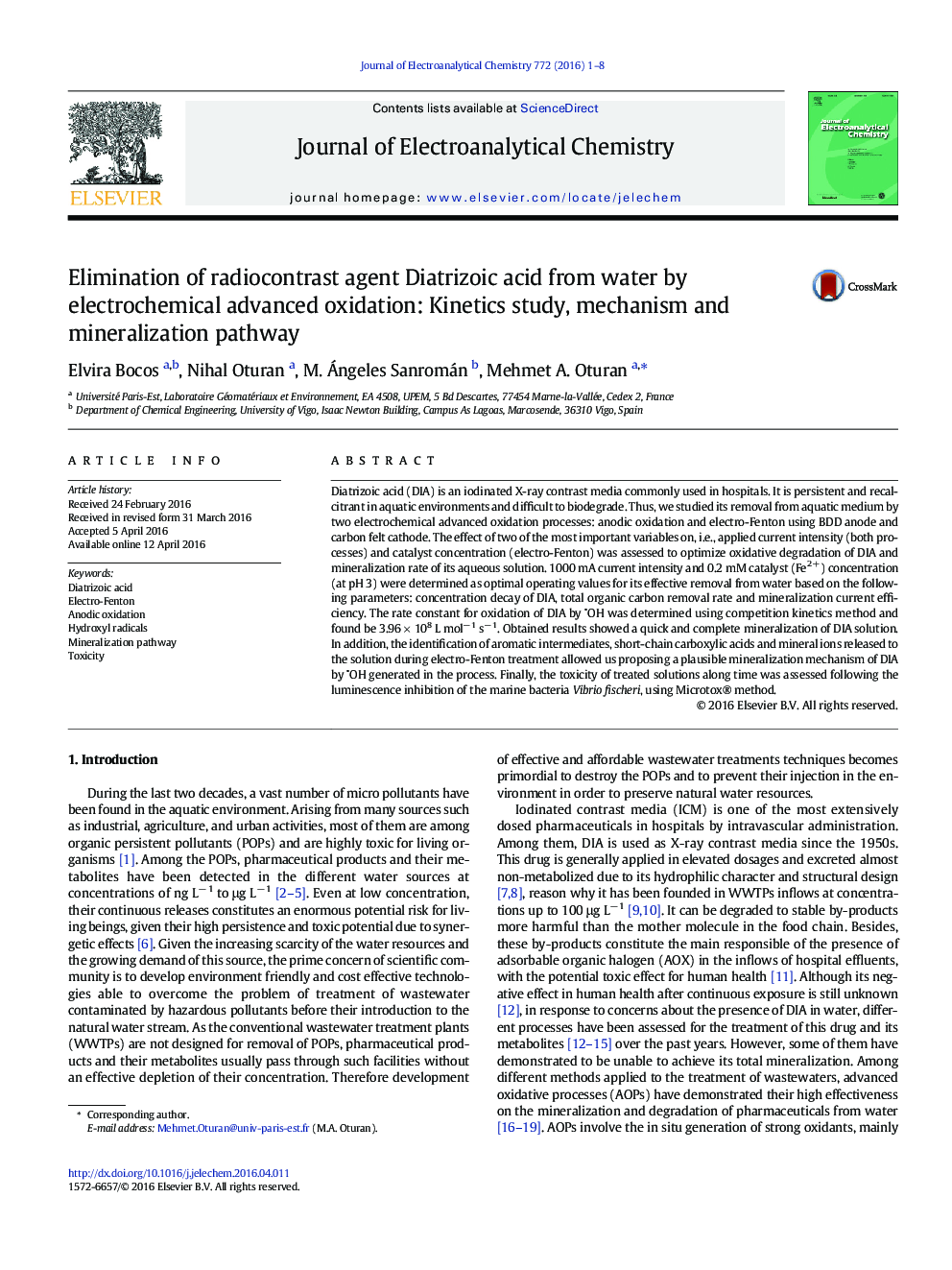| کد مقاله | کد نشریه | سال انتشار | مقاله انگلیسی | نسخه تمام متن |
|---|---|---|---|---|
| 217884 | 463172 | 2016 | 8 صفحه PDF | دانلود رایگان |
• Removal of the radiocontrast agent Diatrizoic acid (DIA) by electrooxidation and electro-Fenton
• Determination of apparent and absolute rate constants of oxidation of DIA by OH
• Complete mineralization of 0.1 mM DIA solution at 4 h treatment
• A plausible degradation pathway was proposed.
• Significant decrease of toxicity along the treatment by electrooxidation of DIA
Diatrizoic acid (DIA) is an iodinated X-ray contrast media commonly used in hospitals. It is persistent and recalcitrant in aquatic environments and difficult to biodegrade. Thus, we studied its removal from aquatic medium by two electrochemical advanced oxidation processes: anodic oxidation and electro-Fenton using BDD anode and carbon felt cathode. The effect of two of the most important variables on, i.e., applied current intensity (both processes) and catalyst concentration (electro-Fenton) was assessed to optimize oxidative degradation of DIA and mineralization rate of its aqueous solution. 1000 mA current intensity and 0.2 mM catalyst (Fe2 +) concentration (at pH 3) were determined as optimal operating values for its effective removal from water based on the following parameters: concentration decay of DIA, total organic carbon removal rate and mineralization current efficiency. The rate constant for oxidation of DIA by OH was determined using competition kinetics method and found be 3.96 × 108 L mol− 1 s− 1. Obtained results showed a quick and complete mineralization of DIA solution. In addition, the identification of aromatic intermediates, short-chain carboxylic acids and mineral ions released to the solution during electro-Fenton treatment allowed us proposing a plausible mineralization mechanism of DIA by OH generated in the process. Finally, the toxicity of treated solutions along time was assessed following the luminescence inhibition of the marine bacteria Vibrio fischeri, using Microtox® method.
Journal: Journal of Electroanalytical Chemistry - Volume 772, 1 July 2016, Pages 1–8
